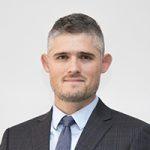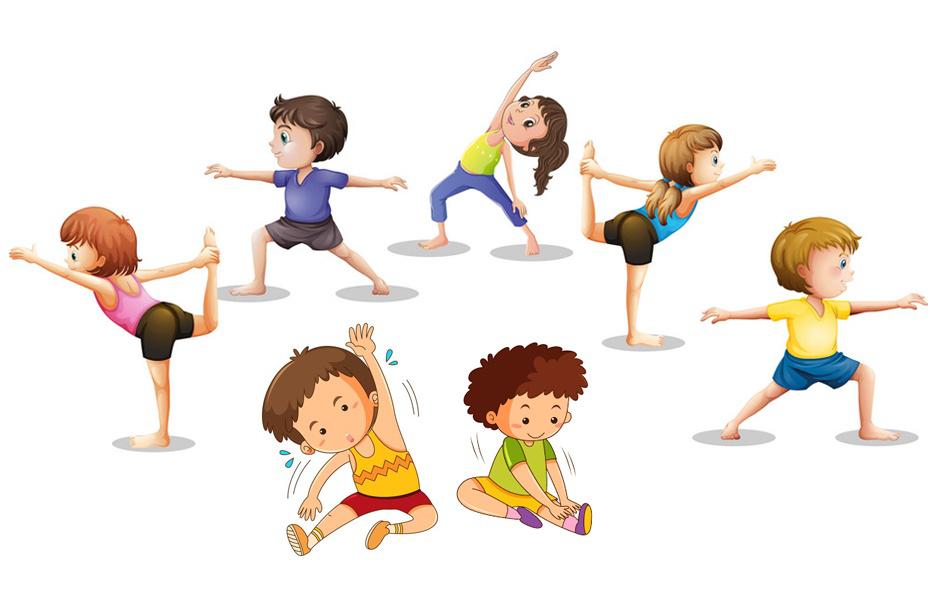

The “simple” truth of stretching

Mike Binet
PT, DPT, PCS, CFMT, BSPTS C2, Physical Therapist

Stretching is the pleasant, low-hanging fruit of an exercise program. Feeling every breath in a serene yogic pose is, to some, more appealing than chasing the cruel belt of a treadmill. Beginning the practice of stretching can be confusing. Current evidence suggests some techniques are minimally effective or even limit muscle performance. Good news, our friends in ancient India, who gave rise to the spandex wearing, warrior posing statues dotting parks around the world, were on to something.
Movement is a vehicle for experiencing, learning, feeling and growing. Wading through the cloud of stretching research may improve your or your child’s potential to grow through movement. This potential depends on the flexibility, or range of motion, at individual body segments.
Range of motion is generally bound by two anatomical structures, joints and muscles. Joints may present with limitations in either the articulating surfaces or the capsuloligamentous structures, which function like a strong, inert packaging. Muscular restrictions reflect elements of “passive” and/or “active” tension.
Passive tension arises from the structural properties of the muscle and the surrounding fascia. The building blocks of muscle have viscoelastic properties, meaning that resistance to elongation is rate dependent1. A faster stretch produces greater muscle stiffness. Fascia is like a spider web wrapping around each segment of muscle and can become bound, limiting the mobility.
Active tension involves contraction of the muscle and depends on a neuro-reflexive collaboration between two types of neural input. Messages from peripheral or alpha motor neurons represent the brain telling the muscle to perform an action. Messages from reflexive gamma motor neurons maintain tension in the muscle, ensuring efficient contraction.
With a clearer picture of “what” restricts motion, let’s turn to “why” this happens. Put simply, our bodies are dynamic. Muscles, joints, connective tissues and neural structures adapt to the physical environment. Lift weights and muscles grow. Stop using a plane of movement and the body will stop making it available. Children have hyper-responsive bodies due to the process of growth. With a growth spurt, long bones develop rapidly resulting in relative shortening of the associated muscles. High muscle tone in a specific plane of movement produces an imbalance which, in turn, may lead to a relative limitation in range of motion.
Either this clears up confusion or at least establishes a sense of more informed confusion. Fortunately, it is the role of your well-trained therapist to assess tissue end-feel and perform special tests, distinguishing the source of a restriction. This process informs the most efficient techniques to employ in regaining mobility. We stretch muscles, mobilize joints, release soft tissues, glide nerves, etc. For the purpose of this article, we focus on stretching as the most familiar and likely accessible strategy to build flexibility.
Current literature recognizes three primary muscle stretching techniques: static, dynamic and pre-contraction2. Static stretching is commonly thought of as traditional stretching, wherein a position is held passively with the muscle on tension. Dynamic stretching is an active process involving movement of the limb through its full range of motion to end range. A sub-set of active stretching, called ballistic stretching, involves bouncing at end-range though, due to a high rate of injury, ballistic stretching is discouraged3. Pre-contraction stretching integrates activation of the muscle prior to loading in an elongated position (contracting then stretching).
The most common method for pre-contraction stretching is called PNF or Proprioceptive Neuromuscular Facilitation. During and immediately following contraction, muscles relax. PNF employs this neuromuscular relaxation phase to increase the impact of stretching. Relaxation occurs in the muscle group performing the contraction at a joint as well as the opposing muscle group. Distinct PNF techniques represent variations in the sequencing of muscle activation and stretching. For example, “contract relax” technique involves contraction and then relaxation with stretching of the same muscle group. “Hold relax” technique involves contraction with subsequent relaxation and stretching of the opposing muscle group. Current evidence indicates PNF techniques are most effective at 75-100% of maximal contraction, holding contractions for 10 second bouts4.
Of the three primary muscle stretching techniques, which is most effective for promoting flexibility in the general population? Current research suggests that static, dynamic and PNF-based stretching all produce benefits. The impact of static and dynamic techniques vary based on muscle distributions and flexibility goals though with similar long and short-term outcomes. PNF-based stretching demonstrates comparable long-term improvements with greater short-term gains.
Stretching prior to exercise reveals stronger distinctions between the three techniques. Static stretching demonstrates a negative impact on muscle performance immediately following called “stretch induced strength loss” 5. Evidence, therefore, discourages the use of static stretching as part of a pre-exercise warm-up6. While this risk exists with static stretching immediately prior to performance, doing so outside of this window is not associated with strength loss. Dynamic stretching immediately prior to performance does not produce a strength loss and, in fact, offers an increase in immediate muscular force output5. PNF-based stretching demonstrates no immediate strength loss but lacks the increase in force output7. Therefore, dynamic stretching appears as the most beneficial option for a pre-exercise warm up.
What, then, is the most beneficial stretching technique for you to integrate in your exercise program? Static stretching requires minimal initial fitness or coordination offering an accessible entry point to a broad population. Dynamic stretching necessitates a base level of coordination but may offer a safe alternative with the concurrent health benefits of active movement. Pre-contraction or PNF-based stretching includes the benefits of active contraction with the greatest short-term gains in range of motion. Significant short term progress may translate into greater adherence to the flexibility program.
Adherence is key. Rising above the mire of evidence is the simple truth; the stretching technique you use consistently produces the greatest benefit. Dosage recommendations suggest stretching 5 days a week with each session consisting of 3-5x 30 second bouts8. Choose your best fit and go stretch.
Sources:
1 Knudson, D. (2006). The Biomechanics of Stretching. Journal of Exercise Science & Physiotherapy, Vol. 2: 3-12.
2 Page, P. (2012). Current concepts in muscle stretching for exercise and rehabilitation. The International Journal of Sports Physical Therapy, Volume 7, Number 1, Page 110<
3 Lippincot et al. (2006). Medicine ACoS ACSM’s guidelines for exercise testing and prescription. 7th ed.
4 Guiu-Tula et al. (2017). The Efficacy of the proprioceptive neuromuscular facilitation (PNF) approach in stroke rehabilitation to improve basic activities of daily living and quality of life: a systematic review and meta-analysis protocol. BMJ Open; 7(12): e016739.
5 Nishikawa et al. (2015). Immediate effect of passive and active stretching on hamstrings flexibility: a single-blinded randomized control trial. J Phys Ther Sci. Oct; 27(10): 3167–3170.
6 Simic et al. (2013) Does pre-exercise static stretching inhibit maximal muscular performance? A meta-analytical review. Scand J Med Sci Sports. Mar;23(2):131-48.
7 AD et al. (2015). Effects of Contract-Relax, Static Stretching, and Isometric Contractions on Muscle-Tendon Mechanics. Med Sci Sports Exerc. Oct;47(10):2181-90.
8 Thomas et al (2018). The Relation Between Stretching Typology and Stretching Duration: The Effects on Range of Motion. Int J Sports Med. Apr;39(4):243-254.


